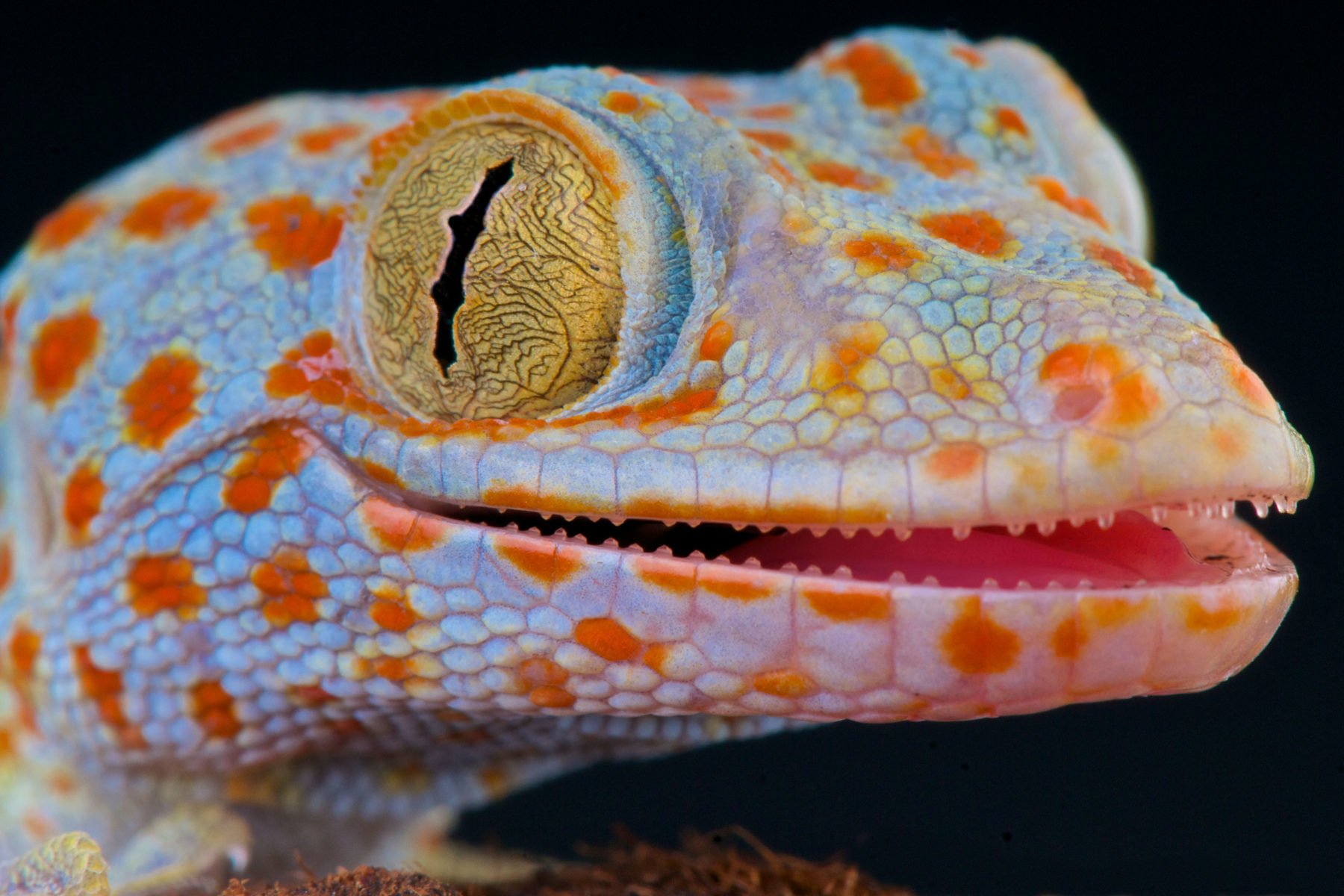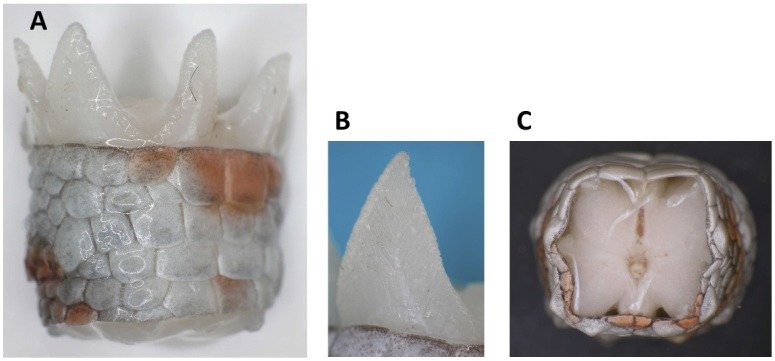The tokay gecko is a masterclass in tail shedding

Bec Crew
Bec Crew

Native to parts of Asia and some Pacific islands, this formidable lizard has also been encountered in the wild in northern Australia, perhaps having made its way from nearby New Guinea.
It holds great cultural significance in certain places as symbols of luck, prosperity and good health. Some believe the tokay gecko (Gekko gecko) can see into the future and is a direct descendant of ancient dragons. In 2009, a surge in trafficking was driven by rumours that the tokay gecko could somehow cure HIV/AIDS.
Supernatural powers aside, this is a very special gecko. Growing to about 30 cm long, it’s thought to be the third largest gecko in the world, after the giant leaf-tail gecko (Uroplatus giganteus) and the New Caledonian giant gecko (Rhacodactylus leachianus), a hefty fellow you can read about here.
It boasts beautiful colours and striking patterns, and the look of its eyes, like many species of gecko, is absolutely mind-bending:

They’re not exactly the friendliest creatures in the world, which perhaps only adds to the species mystique.
Tokay geckos are nocturnal carnivores. They are aggressive, territorial, and will inflict a nasty bite if given half a chance. When threatened, they open their mouths wide and emit a loud ‘bark’, to intimidate any would-be predators.
They have strong, prehensile tails, which means they can use them to grasp onto things, such as a branch, to help them move or balance. Like skinks and other lizards with disposable tails, the tokay gecko is also able to shed its tail as a form of defence.
And lucky for us, scientists have studied this phenomenon very closely to give us an idea of how they’re able to do this.
A team led by Kristian Sanggaard from the Department of Molecular Biology and Genetics at Aarhus University in Denmark used advanced imaging techniques to view what is happening in the tokay gecko’s tail before, during and after autotomy – the voluntary shedding of a body part (in this case, the tail).
Their experiments revealed that these lizards have what basically functions as a ‘precut’ tail, with built-in areas of weakness, just like the score lines in a piece of perforated paper.
They also have mushroom-shaped pieces of tail that lock into the base of the animal and give it more adhesion, so it doesn’t accidentally come loose. You can see it here in these images from Sanggaard’s study:

Images A and B show the mushroom-shaped muscles that extend from a dropped tail stump and C shows the exposed base. You can see the little holes where the mushroom-shaped muscles would fit in when the tail is attached – those holes close up almost instantaneously once the tail is shed.
Interestingly, the researchers found that the mechanisms that allow the tokay gecko to shed its tail are very similar to those used by sea lilies, otherwise known as crinoids or feather stars, which can shed their many arms to get themselves free from a predator.
We’ll leave you with this footage of a wild tokay gecko, showing a bit of that fierce ‘dragon energy’ that has earned it so much reverence:

